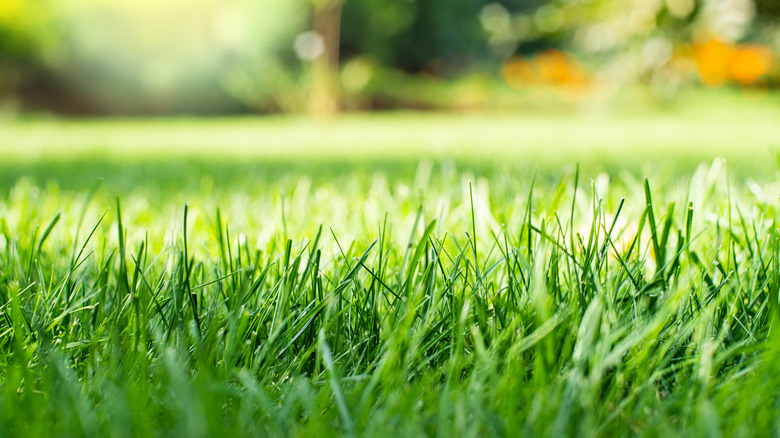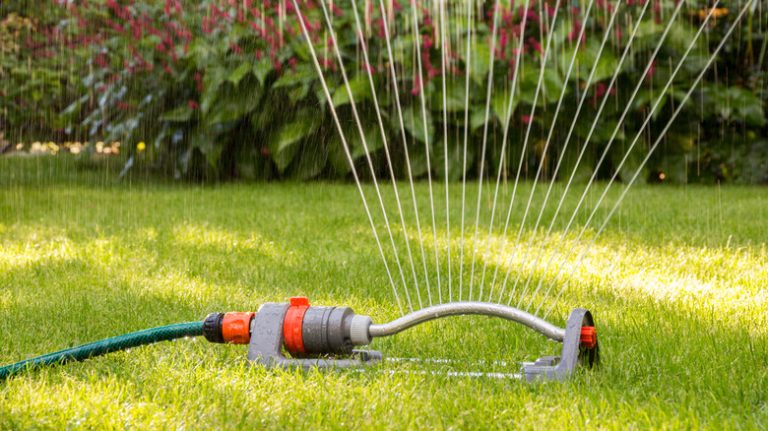Maintaining the health of your turf requires regular lawn mowing that goes beyond merely keeping your yard neat and tidy. Understanding your lawn and its requirements is just as important. One critical aspect that often gets overlooked is the height at which you mow your lawn. The University of Minnesota suggests keeping your lawn at a height of around 3 inches. This advice may seem tasking, but it helps with your lawn’s overall wellbeing. Maintaining your lawn at about 3 inches provides numerous benefits, from enhanced photosynthesis to natural weed suppression and deeper root growth. These combined advantages contribute to a healthier, greener, and more resilient lawn.
However, it’s also crucial to remember that this isn’t a one-size-fits-all rule. The height at which you should mow your lawn depends on various factors, such as the type of grass, the current season, and the overall health of your lawn. What’s ideal for one lawn might not work for another. As you navigate through your lawn care routine, take the time to understand these unique requirements, and adjust your strategies accordingly. The perfect lawn isn’t just about how green it looks; it’s also about how well it thrives under your care.
Understanding your grass

When mowing your lawn, it’s important to understand what kind of grass you’re dealing with — different species of grass prefer different lengths. You might have cool-season grasses, like Kentucky bluegrass, that thrive when cut between 0.75 and 3.5 inches. On the other hand, warm-season grasses, like the Bermuda type, prefer a trimmer look at 1 to 2 inches. Generally speaking, you should not cut the grass too short or too long. Grass needs enough blade surface to photosynthesize effectively. By cutting the grass too short, you risk scalping the lawn, which can cause damage to the grass and leave it vulnerable to diseases and pests. On the other hand, letting your grass grow too long is not the solution either. Overgrown grass can also become a haven for pests and a breeding ground for diseases.
So, where’s the balance? You find it in the ⅓ rule. Never cut more than ⅓ of the grass blade in a single mowing. This strategy promotes quicker recovery and robust growth. Also, your mowing practice needs to adapt to the changing seasons. In spring, when the grass grows vigorously, you might find yourself mowing more often. As the summer heat intensifies, let the grass grow a bit longer. As autumn arrives, you can go back to a shorter cut to prevent the grass from matting under the winter snow.
Benefits of cutting grass at 3 inches
Surprisingly, cutting your grass to a height of 3 inches offers a series of advantages that lead to a healthier, lusher, and more resilient lawn. Firstly, it can suppress weed growth. Weeds are a common nuisance in lawns, and they compete with the grass for resources, often to the detriment of your lawn’s health. Grass cut at 3 inches in height casts more shade on the soil surface, which prevents sunlight from reaching weed seeds. Without sufficient sunlight, these seeds struggle to germinate and grow. Thus, a simple adjustment in your mowing height can act as a natural weed deterrent, helping keep your lawn weed-free without using chemicals.
The second notable benefit is that grass cut at 3 inches in height is better equipped for photosynthesis. Photosynthesis is the process by which plants convert sunlight into food. By maintaining your grass at a height of 3 inches, you’re essentially increasing the leaf surface area available to absorb sunlight. More leaf surface means more photosynthesis, which in turn translates into more food for the grass. The grass can sustain healthier and more vigorous growth with more food and energy. Therefore, this practice directly enhances your lawn’s overall health and vitality.
Lastly, a lawn mowed to 3 inches typically results in a deeper root system. The height of grass is often proportionate to the depth of its roots. Therefore, taller grass usually has longer roots that reach deeper into the soil. These deep roots have better access to groundwater, making the lawn more resistant to drought. Furthermore, they enable the grass to absorb more nutrients from the soil, contributing to overall lawn health.
